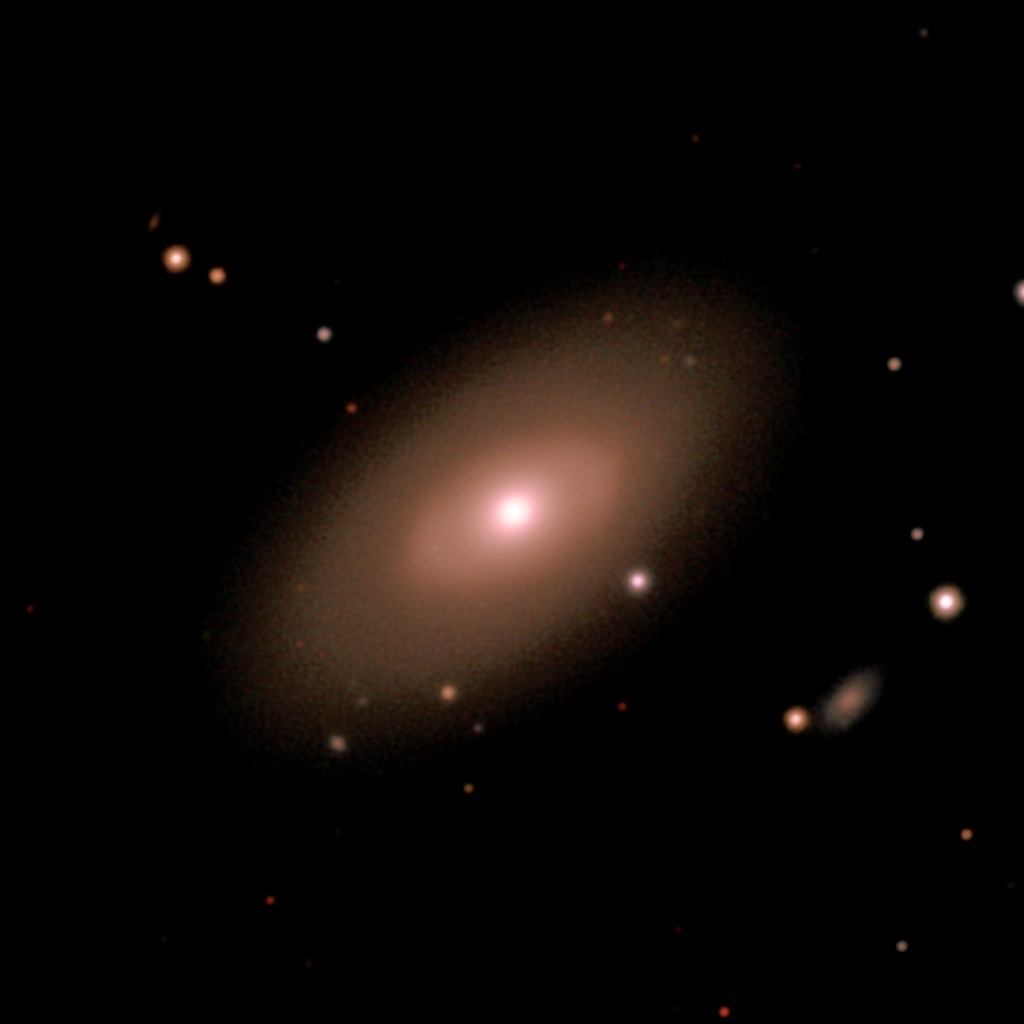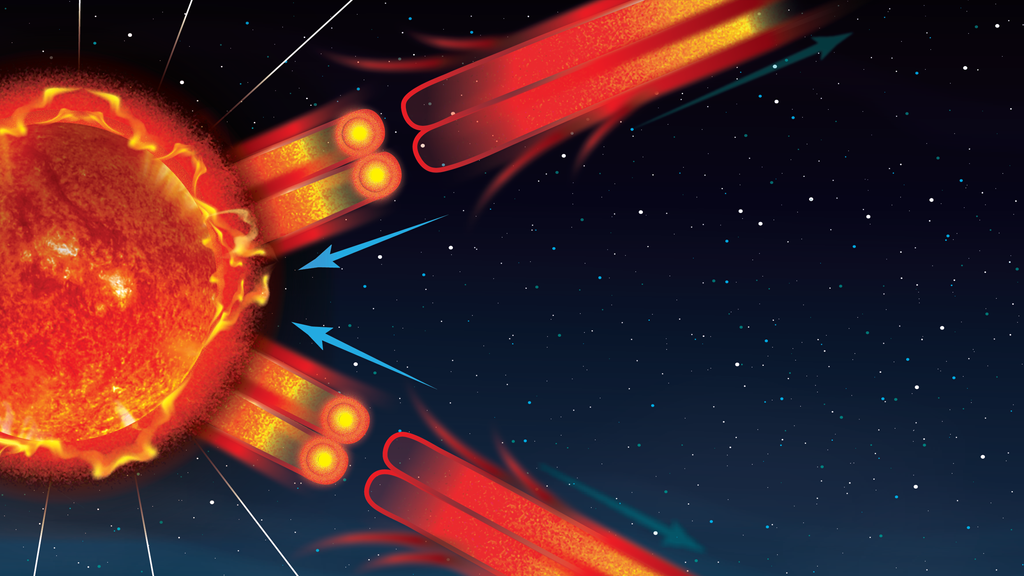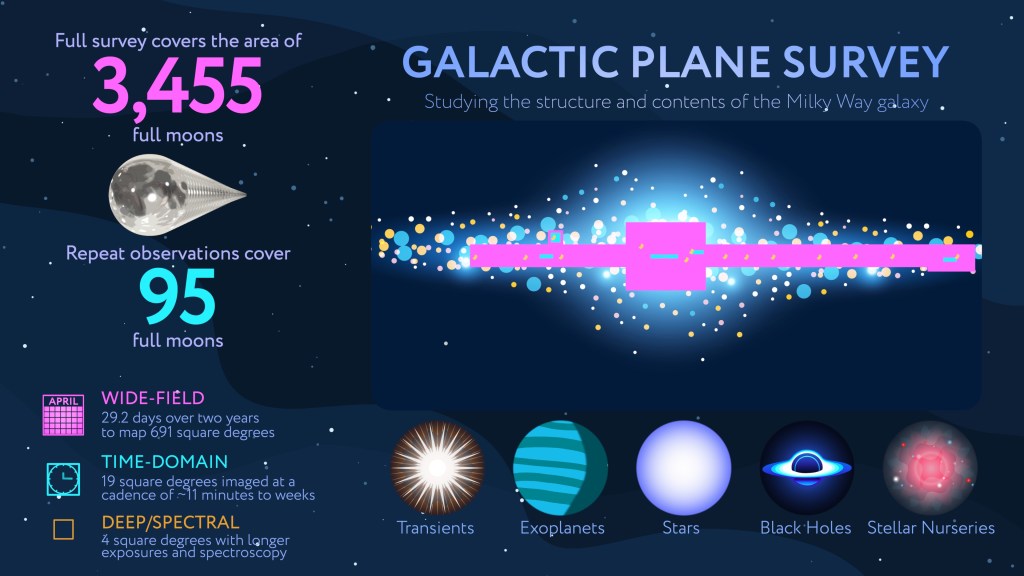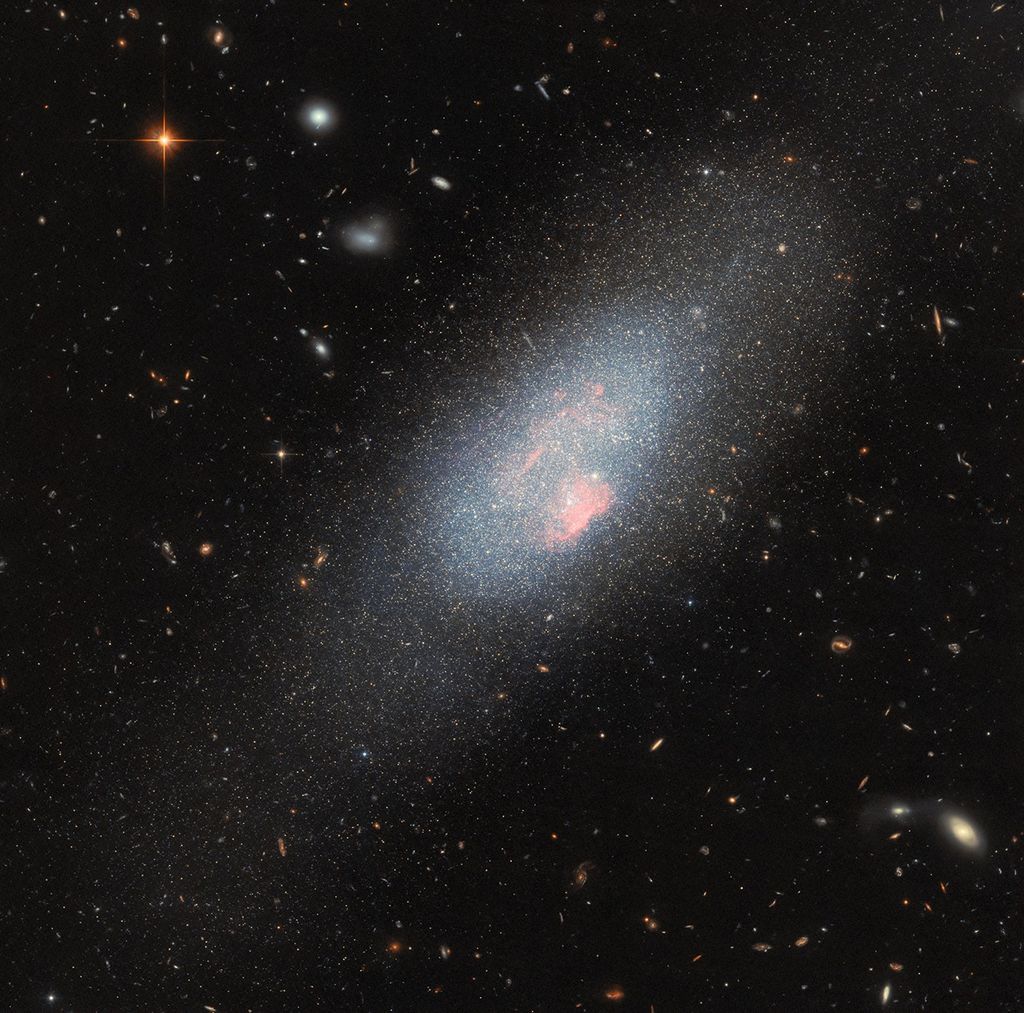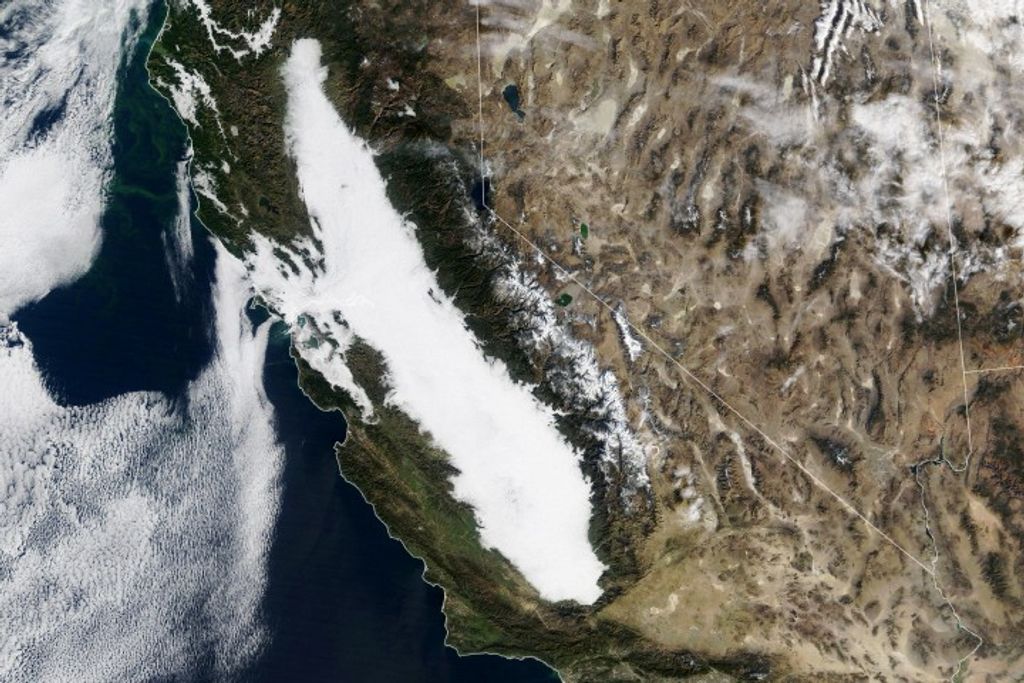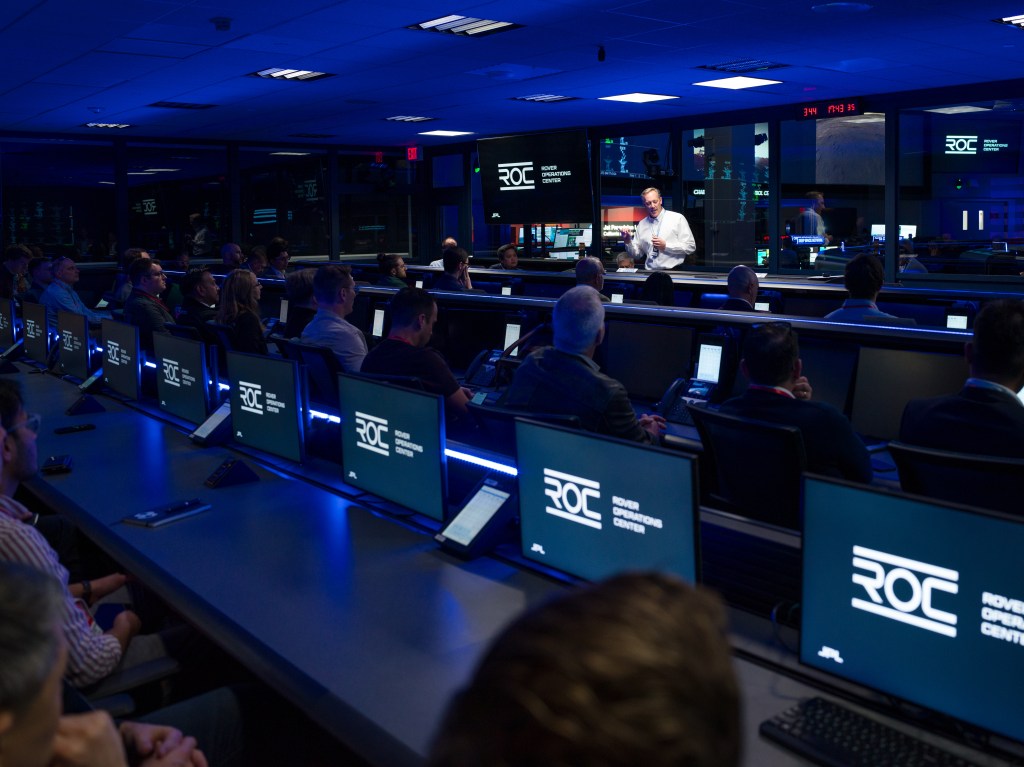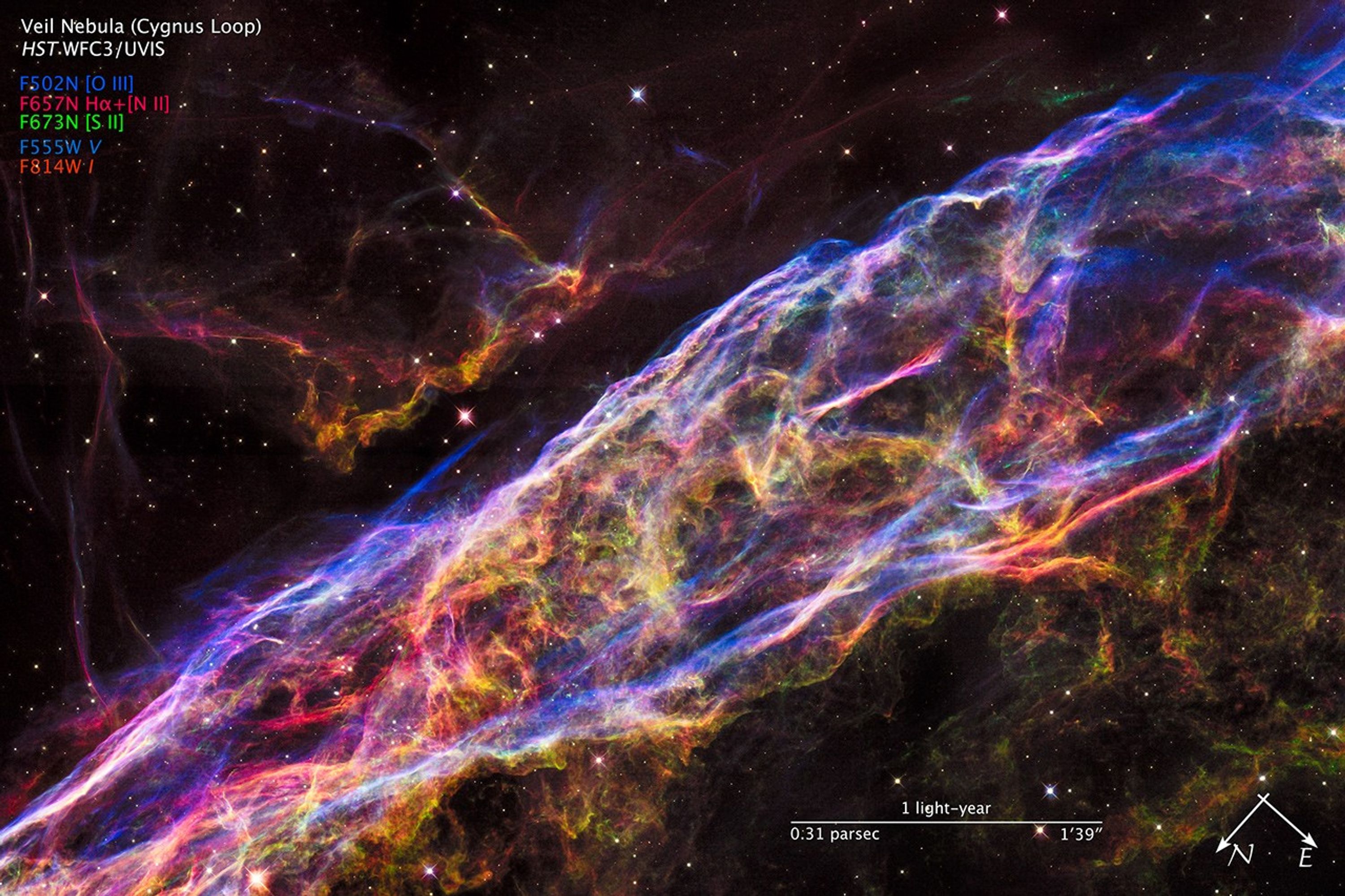Not long before the dawn of recorded human history, our distant ancestors would have witnessed what appeared to be a bright new star briefly blazing in the northern sky, rivaling the glow of our moon. In fact, it was the titanic detonation of a bloated star much more massive than our sun. Now, thousands of years later, the expanding remnant of that blast can be seen as the Cygnus Loop, a donut-shaped nebula that is six times the apparent diameter of the full moon. The Hubble Space Telescope was used to zoom into a small portion of that remnant, called the Veil Nebula. Hubble resolves tangled rope-like filaments of glowing gases. Supernovae enrich space with heavier elements used in the formation of future stars and planets – and possibly life.
1 min read
Hubble Zooms in on Shrapnel from an Exploded Star
Related Images & Videos

Veil Nebula Supernova Remnant
NASA's Hubble Space Telescope has unveiled in stunning detail a small section of the expanding remains of a massive star that exploded about 8,000 years ago. Called the Veil Nebula, the debris is one of the best-known supernova remnants, deriving its name from its delicate,...
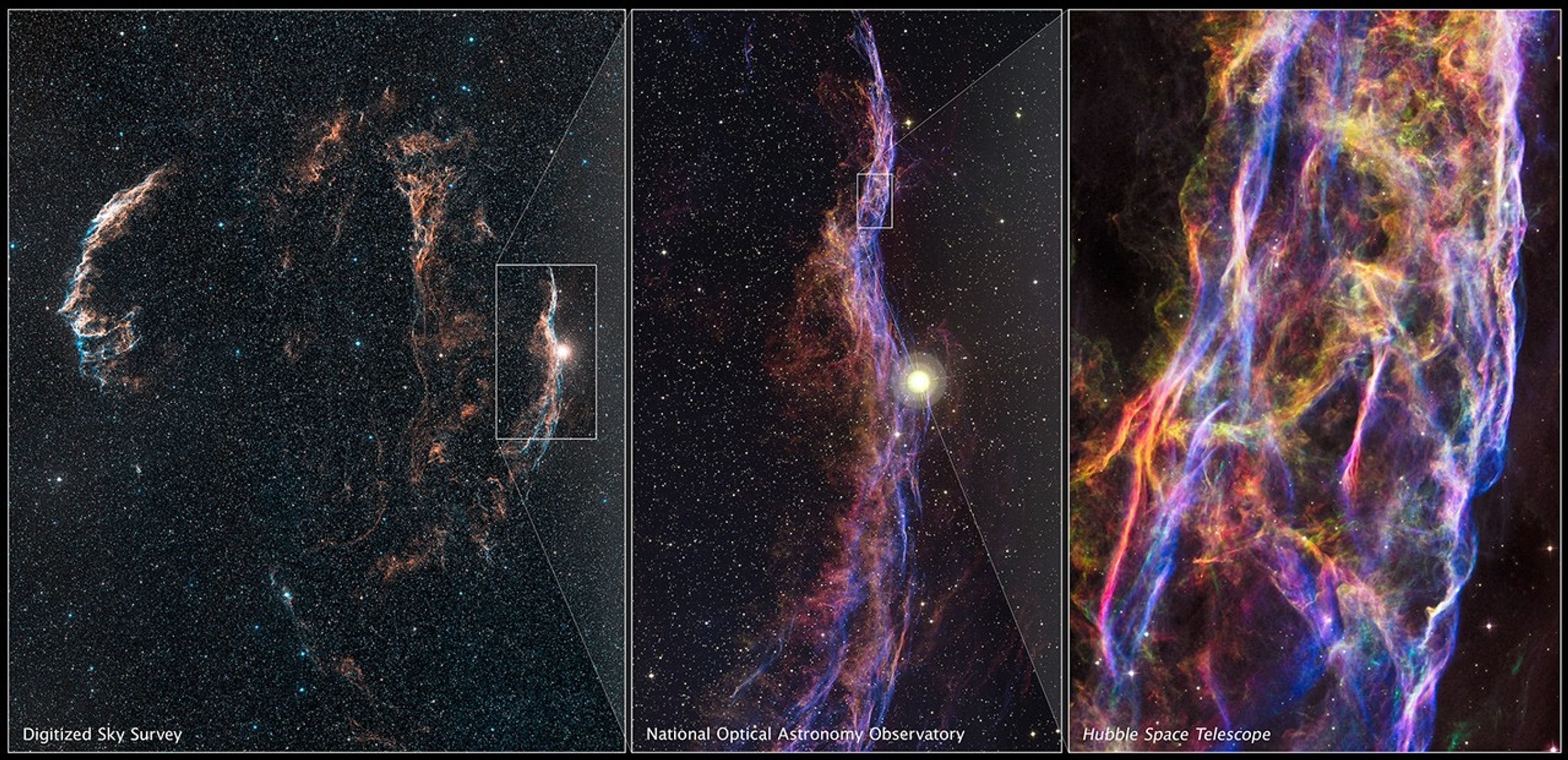
Cygnus Loop and Location of Veil Nebula
[Left] – This is a sky survey image of the Veil Nebula, a 110-light-year-wide expanding remnant of a star that exploded about 8,000 years ago in the constellation Cygnus. [Center] – This is a ground-based telescope image of a 15-light-year-long stretch of the eastern portion of...
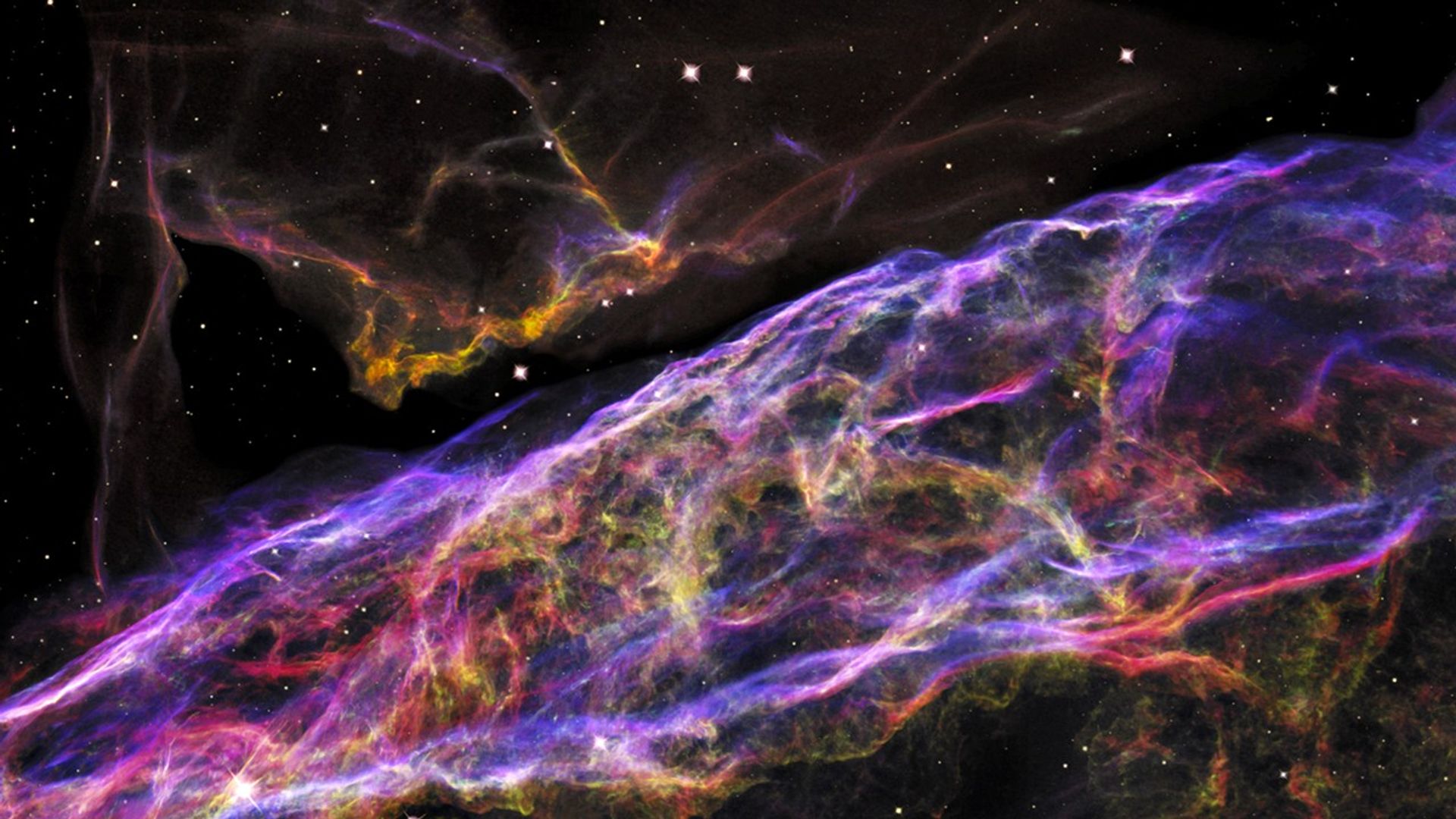
3-D Flyover Visualization of Veil Nebula
This 3-D visualization flies across a small portion of the Veil Nebula as photographed by the Hubble Space Telescope. This region is a small part of a huge expanding remnant from a star that exploded many thousands of years ago. Hubble resolves tangled rope-like filaments of...
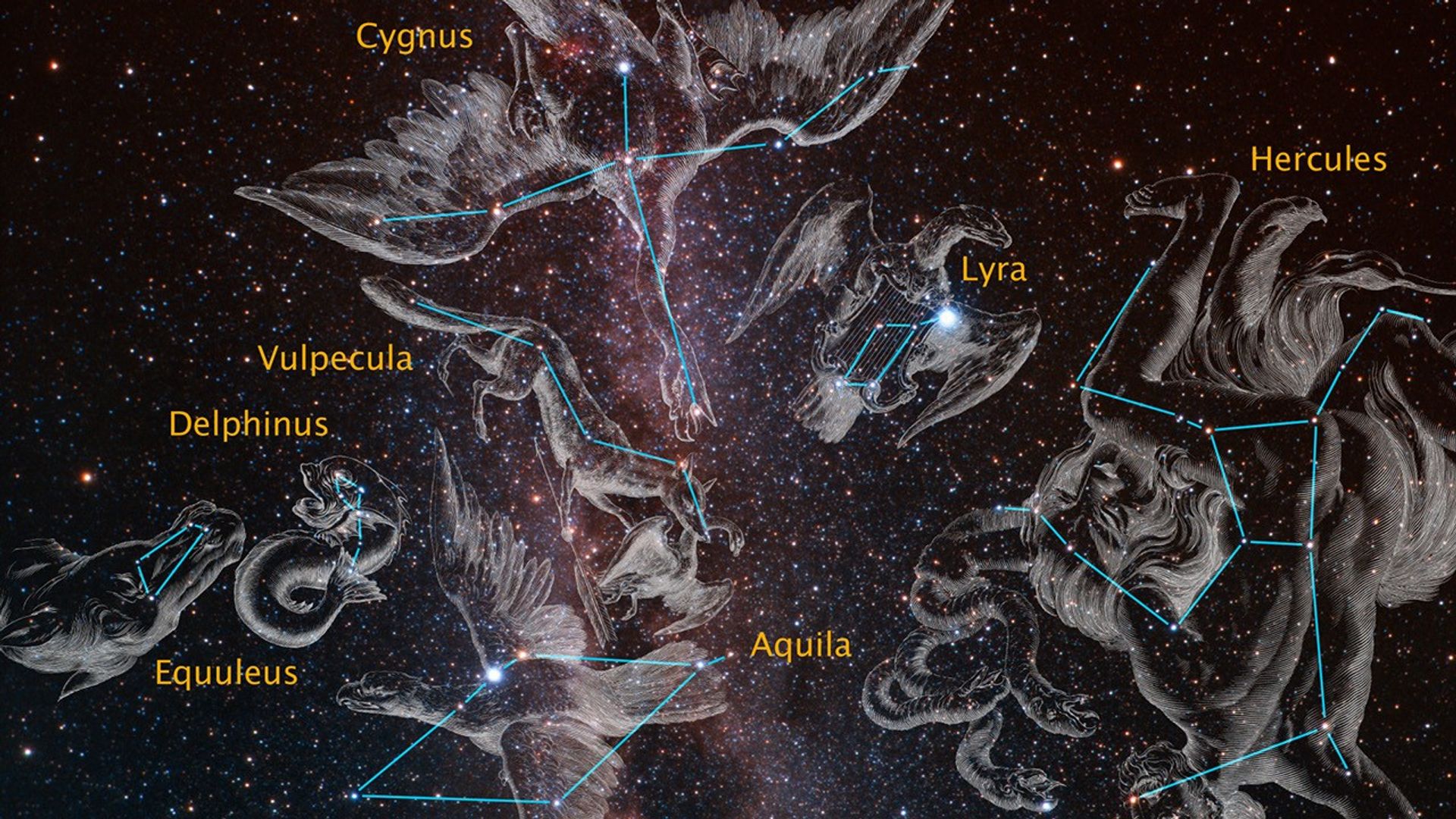
Zoom into Veil Nebula
This video opens with a backyard view of the nighttime sky centered on the constellation Cygnus, the Swan. We zoom into a vast donut-shaped feature called the Veil Nebula. It is the tattered expanding bubble of debris from a star that exploded about 8,000 years ago. The bubble...
Share
Details
Claire Andreoli
NASA’s Goddard Space Flight Center
Greenbelt, Maryland
claire.andreoli@nasa.gov
NASA, ESA, Hubble Heritage Project


